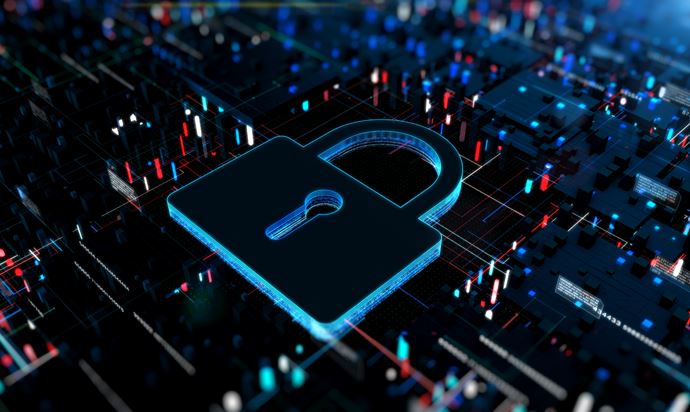As the capabilities of artificial intelligence (AI) technology continue to evolve, it’s beginning to look like there’s not much AI can’t do. In the realm of cybersecurity especially, some emerging innovations and applications aim to make the web a safer place for everybody.
Whether you’re already working in the cybersecurity field or have plans to, staying on top of the latest trends is essential. This includes understanding how professionals are using AI for cybersecurity, the advantages of AI in cybersecurity, AI limitations, and more.
How Are AI and Cybersecurity Related?
Cybersecurity, in simplest terms, refers to the methods and strategies used to keep the digital world safe and prevent web attacks in the form of phishing attacks, malware, distributed denial of service (DDoS) attacks, and the like.
So, where does AI come in? As AI technology has expanded rapidly over the past several years, it has found a growing place in cybersecurity. Today, there are various applications for AI in cybersecurity, as AI can collect and analyze data, detect patterns, and detect unusual behaviors before they may be seen by the naked eye.
Why Is AI in Cybersecurity Important?
AI in cybersecurity is becoming increasingly important as the scope and capabilities of AI technology continue to progress. When utilized correctly, AI makes it possible to better mitigate risk, prevent cyberattacks, and detect the signs of an attempted attack. In addition, AI automates many manual and laborious cybersecurity tasks, freeing up valuable time and resources for cybersecurity professionals to focus on other key aspects of their work.
What Are the Benefits of AI in Cybersecurity?
There are a number of potential advantages of AI in cybersecurity, particularly when you consider the ability of AI systems to detect signs of cyberattacks well before they occur and analyze enormous amounts of data in a very short period of time.
Improved Efficiency and Accuracy for Security Systems
Compared to older and more conventional cybersecurity solutions, AI technologies can offer a much greater sense of accuracy and efficiency. That’s because AI is able to scan through an incredible amount of data in seconds that would take a human cybersecurity professional longer to scan manually. Meanwhile, the ability of AI technology to detect patterns makes it possible to accurately pinpoint signs of an attack before it occurs.
Scalability and Cost Efficiency
Another beneficial quality of AI is that once this technology is implemented for cybersecurity, it’s incredibly easy (and cost-effective) to scale as needed. This means that as an organization grows or security needs change, AI technology can evolve alongside it.
And because threats can be better mitigated and responded to with AI, businesses may enjoy additional cost savings related to dealing with website downtime and other repercussions of an attack.
Improve Data Analysis and Processing
Artificial intelligence in cybersecurity can also drastically improve data analysis and data processing, making it possible to quickly sift through data. This can streamline entire cybersecurity processes, especially for businesses and organizations that generate large amounts of data—all while freeing up valuable human resources for other tasks.
Ability to Learn Over Time
One of the best aspects of artificial intelligence is that it learns from itself over time and thus is constantly improving. As you continue using AI for cybersecurity, it will only become more closely in tune with your organization’s needs and increasingly efficient with each passing day.
Decrease of Human Error
Cybersecurity professionals are experts in their field who can use their critical thinking skills to keep the web safer for everyone. Unfortunately, they are still prone to the occasional human error—and all it takes is one small mistake to let a cyberattack slip by undetected. By using AI technology in conjunction with human cybersecurity professionals, it is possible to mitigate errors and maximize the effectiveness of any cybersecurity strategy.
Assist in Simulation Cyberattacks
Last but not least, AI technology can be considerably useful in carrying out simulation cyberattacks, where an organization emulates an actual attack against its own network in an attempt to test its procedures and cybersecurity strategy. This can be a great way to identify areas of weakness that may need to be addressed.
Examples of AI in Cybersecurity
To gain a better understanding of the capabilities of AI, it can be helpful to explore some AI in cybersecurity examples. Keep in mind that this is not a comprehensive list of all the ways AI is being used in cybersecurity, but it does touch on some of the most notable innovations of recent years.
AI-Driven Malware Detection and Analysis
Today, AI is used to scan substantial amounts of data and detect patterns that could indicate an upcoming attack. This, in turn, makes it for cybersecurity professionals to thwart attacks and threats before they arise. From there, AI can also be used to analyze attempted attacks so organizations can better prepare for them in the future.
Machine Learning in Phishing Detection and Prevention
Phishing continues to be a persistent problem across the web, but AI is now being used to detect and prevent more instances of phishing through machine learning. This is done by using data sets to learn the patterns and signs of phishing attacks so that they can be spotted and eliminated before any data is compromised.
Natural Language Processing for Threat Intelligence Analysis
Another area of AI known as natural language processing (NLP) is also becoming a useful tool when it comes to analyzing threat intelligence. This is done by looking closely at vast quantities of textual data from different sources (including news articles and social media). From there, patterns can be formed and key information extracted for AI systems to build their threat intelligence accordingly.
AI-Enabled User and Entity Behavior Analytics (UEBA)
Additionally, Entity Behavior Analytics (UEBA) is being used in AI as a cybersecurity solution that uses complex algorithms and other machine learning processes to spot anomalies or inconsistencies in data patterns. Subsequently, this can identify potential and thwart potential threats before they have a chance to materialize.
Autonomous Response Systems for Threat Mitigation
AI-enabled cybersecurity systems may also include autonomous response systems, which are extremely effective at detecting attacks and responding to them more efficiently than a human would be able to do manually. By detecting and responding to threats sooner, it is possible to mitigate the negative effects of an attack.
Predictive Security Analytics for Proactive Risk Management
By analyzing large amounts of data, AI software can detect patterns used to make predictions about security threats over time. For example, an AI algorithm might detect that the risk of a certain type of attack is higher. From there, more proactive risk management efforts can be made to mitigate the risk of that particular type of attack based on predictive security analytics.
Safety Considerations in AI-Enabled Cybersecurity
While there are many potential advantages of AI in cybersecurity, implementing any new technology involves some level of risk. In fact, there are several safety considerations that cybersecurity professionals must factor in when deciding whether to implement AI.
Ethical Implications and Bias Mitigation
One of the most critical safety considerations in AI-enabled cybersecurity is that of potential bias, namely in decision-making. When an AI system is fed data that is biased or comes from an algorithm that was not written objectively, this can lead to ethical issues in its decision-making that can have serious and far-reaching consequences for certain groups or individuals.
Data Privacy and Confidentiality Measures
Data privacy is another issue facing AI-enabled cybersecurity, especially when you account for the incredible amount of data AI technology uses to make informed decisions about cyber threats and cybercrime. Organizations thinking about implementing some form of AI systems into their cybersecurity platforms should have a thorough plan in place for keeping all collected data safe and private.
Human Oversight and Collaboration in AI Systems
As effective as AI technology can be at detecting and mitigating risks, the reality is that there will always need to be a human component at play. Yet, unfortunately, there is also the risk of human oversight in AI cybersecurity—particularly as some organizations become more complacent with their cybersecurity strategies over time.
How Can Generative AI Be Used in Cybersecurity?
One specific segment of AI known as generative AI is proving especially useful in the world of cybersecurity. Generative AI refers to technology capable of generating content in the form of text, videos, images, and the like. This is done by learning the models and structure of each type of content, then generating new data with similar patterns.
In cybersecurity, generative AI is increasingly being used to identify patterns and trends in cyberattacks and other security threats. This, in turn, allows for a more proactive approach to cybersecurity. Generative AI can also be used to generate unique passwords or create strong encryption keys that maximize security.
Will Cybersecurity Be Replaced by AI?
There’s no denying that AI has (and will continue to have) a place in the cybersecurity industry. However, it is unlikely that the real work of cybersecurity will ever be completely replaced by AI. That’s because human professionals are still required for the most crucial cybersecurity tasks, including strategizing and locating cyber criminals.
In fact, according to United States Bureau of Statistics (BLS) data, the job outlook for information security analysts is expected to grow by 32% between 2022 and 2032 alone. Rather than being replaced by AI, it is more likely that AI will simply become another useful tool for human cybersecurity professionals to do their jobs better and more efficiently.
Learn Cybersecurity Fundamentals at Marymount University
As cyber threats continue affecting businesses and individuals around the globe, new AI innovations and applications may make it possible to mitigate these risks. From machine learning in phishing detection to AI-driven malware analysis, the future of cybersecurity is looking brighter as the capabilities of AI technology evolve.
Looking to take your cybersecurity knowledge to the next level? Marymount University offers a Master’s degree in Cybersecurity that can prepare you for high-level cybersecurity roles, offering the foundational skills you need to lead, succeed, and protect the digital world. Get in touch today to learn more, or start your online application.
Sources
https://marymount.edu/admissions/graduate-students/meet-with-us/
https://info.marymount.edu/apply-to-marymount
https://www.crowdstrike.com/cybersecurity-101/secops/generative-ai/
https://www.bls.gov/ooh/computer-and-information-technology/information-security-analysts.htm






